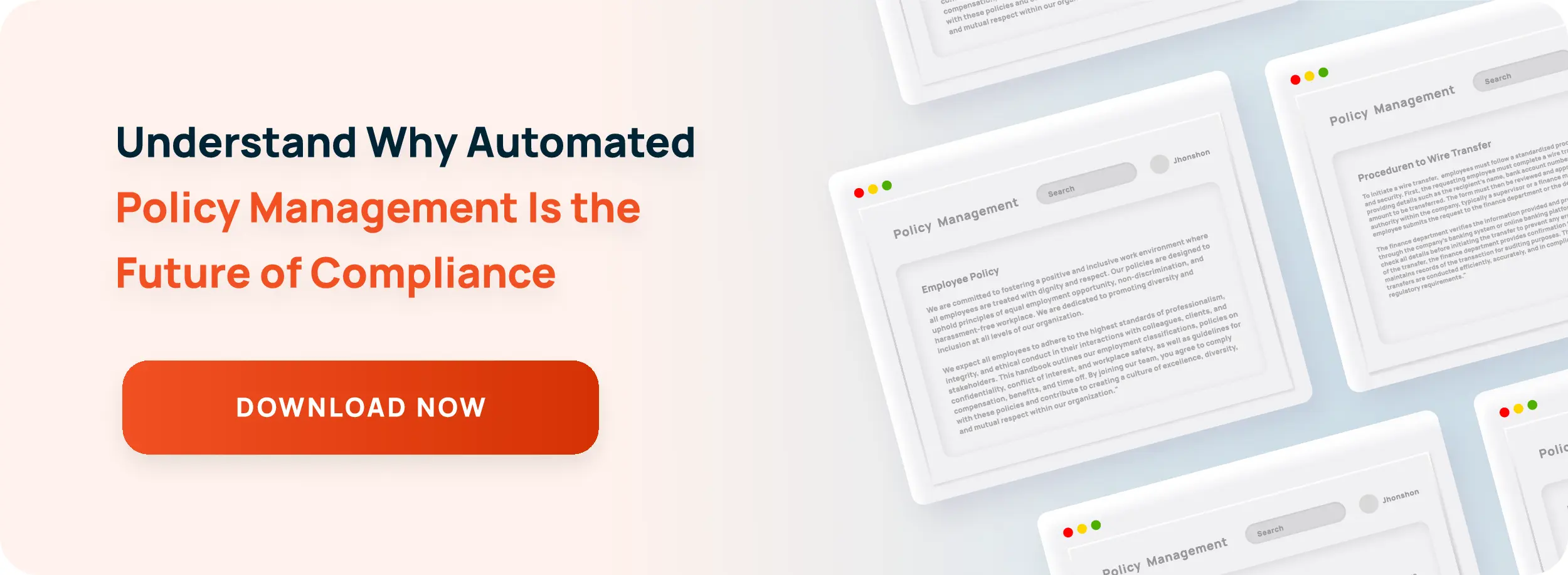Free Policy Review Checklist for Better Policy Documents
What’s Your Policy Document Missing? Use this Policy Review Checklist
When you’re tasked with reviewing a policy, what’s the process you follow to ensure all the information is accurate? What do you look for, and what information needs to be included?
Often, the policy review process is rushed or nonexistent, and issues and errors arise after the policy has already been approved, distributed and implemented, which can cause bigger issues to pop up.
Ensure the accuracy and completeness of each policy by making sure reviewers use the policy review checklist below:
1. Format
- Font size, font type and styling of text are consistent
- All policy elements are included and in the same order
- The same, most up-to-date policy template is used
- Policy name, type, number, department are included
- Creation date, revision number and last revised date are listed
- Active voice is used throughout, with a consistent tone and person (first, second or third)
2. Purpose
- Explain the reason for the policy
3. Scope
- Describe what the policy covers
- Explain to whom the policy applies using titles only, not specific names
- List who is responsible for executing, managing and keeping the policy up-to-date
4. Definitions
- Define key terms the policy uses
- Eliminate unnecessary definitions
5. Related Links
- Include links or the names of related policies, processes and procedures that are referenced in the policy
6. Policy
- Ensure the policy addresses the purpose described earlier, and uses the terms listed above
- Make sure the policy is consistent with other policies, industry standards, regulations and laws, and is in line with your organizational values and goals
- Review the policy for accuracy, clarity and brevity
- Eliminate procedural or process language that should instead be included in procedure and process documentation
- State who is responsible for enforcing the policy and what consequences, if any, exist if the policy is violated
Once you’ve read through the policy using the listed criteria, you can: approve the policy as-is; approve the policy with minor edits; not approve the policy because major revisions are needed; or request the policy be retired because it’s no longer relevant.
Regardless of which route the policy takes as the next step in the process, the policy should be managed using an automated system so revisions can be tracked, version histories can be stored and full audit trails can be captured. Want to see what we mean? See how Policy Management Software can automate the entire policy and procedure lifecycle by reading our White Paper: Why Automated Policy Management Software is the Future of Compliance

